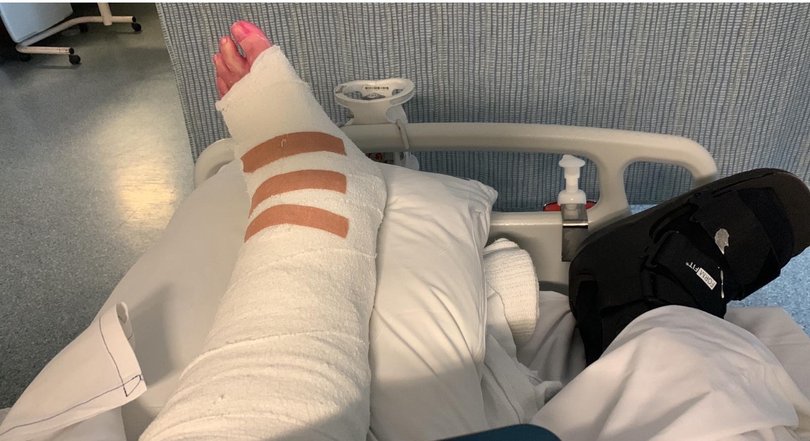JENI O’DOWD: With such high taxes, Sydney-siders are left wondering why their needs are neglected

There’s something deeply wrong with a city when a woman can end up lying in a Redfern gutter with two broken ankles, and the ambulance service casually tells her she’ll be waiting at least two hours, probably longer.
This wasn’t at 3am after a big night out. This was my friend last Thursday evening, simply walking home from dinner at 9.45pm.
One minute she was chatting with friends, the next she was on the ground because Sydney can’t even manage a basic road without leaving a pothole big enough to take someone out.
Sign up to The Nightly's newsletters.
Get the first look at the digital newspaper, curated daily stories and breaking headlines delivered to your inbox.
By continuing you agree to our Terms and Privacy Policy.Not a construction trench. Not a misstep. Just a standard, neglected Sydney pothole. And no, she wasn’t drunk, and yes, she was looking where she was going.
The advice from the NSW Ambulance operator: don’t move her, and expect a two-hour wait.
Then the callback: we don’t want to upset your friend, but it’ll be longer than two hours.
I don’t blame the paramedics. The ambos are some of the best people you’ll ever meet, and none of this failure is on them.
They’re running flat out with too few crews, too many emergencies and a system stretched too thin.
But if this can happen mid-week in November, what on earth is waiting for us once the silly season hits?

The particular street, Wells Street in Redfern, didn’t help her chances. The footpath is so narrow it’s basically decorative, less than a metre wide and jammed with poles and bins.
Google Street View shows pedestrians strolling down the road as if it were a designated walkway. So when Gail hit the pothole, she didn’t fall onto a safe, maintained footpath. She fell straight into traffic.
Gail went down hard. The pain was immediate and blinding. She couldn’t stand. She couldn’t even crawl out of the roadway. She was stuck there, trying not to panic while a colleague called triple-zero and another physically diverted cars around her body.
As she lay there, she started thinking about which friends lived nearby, who had a big enough car and who was strong enough to lift her without making the breaks worse.
In the end, a young man walking home saw her on the ground and didn’t think twice. He went home, grabbed his flatmates, and together they lifted her into his old sedan and drove her to Royal Prince Alfred Hospital in Newtown.
No flashing lights. No emergency services. Just a stranger called Storm, who behaved with more urgency than the institutions funded to the tune of millions of dollars to do the job.

At the hospital, Gail learned she’d broken both ankles, one badly enough to need plates and pins. She’s already discovering that hopping is impossible and crutches are a joke.
Getting to the bathroom, making a cup of tea, leaving the house; everything is now a challenge.
And all of this is because Sydney can’t maintain a road.
This is where NSW is at. We pay some of the highest taxes in the world. Governments love talking about “resourcing”, “capability” and “investment”.
Councils, especially in this case the City of Sydney, spend endless hours on global-city branding, cultural strategies and long-term visionary plans. They debate foreign conflicts. They commission ambitious art projects. They produce glossy “city-shaping” rhetoric.
But a footpath wide enough for humans? A pothole patched before it shatters someone’s body? Too mundane, apparently.
And the State Government doesn’t get a pass. Ambulance demand keeps breaking records. We don’t have enough crews on the road.
We hear stories like this again and again, and somehow it’s treated as background noise.
This is modern Sydney today: the population keeps growing, the infrastructure can’t keep up and ordinary residents are left to fill the gaps.
My friend will recover, slowly, painfully, and with metal in her ankle, but she keeps saying the same thing: thank God for Storm. Thank God for the person who diverted traffic so she wasn’t run over. Thank God for the strangers who cared.
Imagine if the systems we pay for cared half as much.
